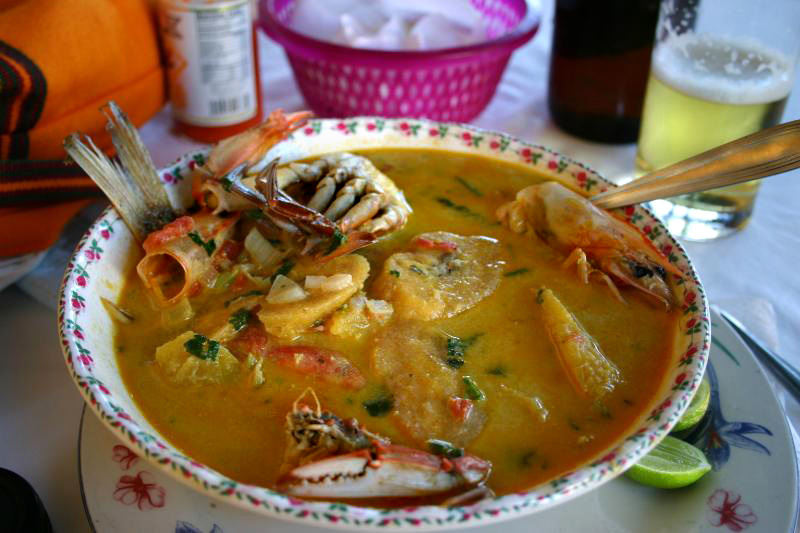Tapado is a seafood stew from Guatemala that is unlike any other stew in the country. If you are familiar with Guatemalan food, then you know Guatemalans retain their Mayan heritage by using corn and beans in their dishes; and most stews incorporate similar ingredients and spices (tomatoes, onion, garlic, tomatillo, etc). Tapado is entirely different; a soup made with a seafood broth and coconut milk with crab, fish, shrimp, and green plantains. Its uniqueness has to do with it originating within the Garifuna culture.
The Garifuna originated in South Nigeria where they were taken as slaves by the British, and shipped across the Atlantic Ocean. While at sea, a storm shipwrecked their vessel and they found themselves on the Caribbean Island of St. Vincent. The slaves mixed with the local indigenous Caribs and a new culture (stemming from West African and Caribbean) and traditions emerged. The Caribbean Island was later colonized by the British and the Garifuna were taken to the island of Roatan, off the coast of Honduras; then spreading to the mainland of Guatemala in the early 1800s to the town of Livingston, where they still reside today.
One dish you can’t miss in Guatemala is Tapado. The rich coconut seafood broth makes this soup creamy but still light. Plantains thicken the broth, and crab, fish and shrimp make up the body of the soup. Usually served with coconut rice, Tapado is a hearty meal to be eaten on any occasion.













